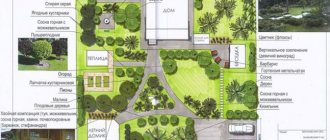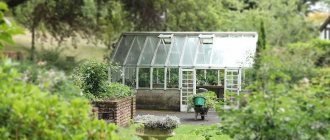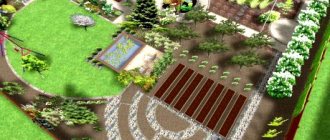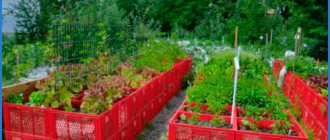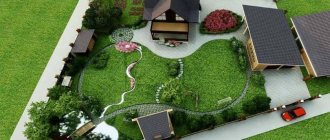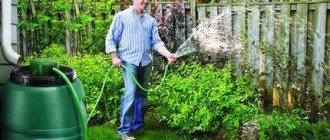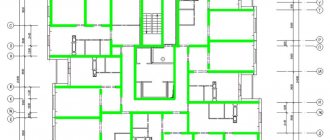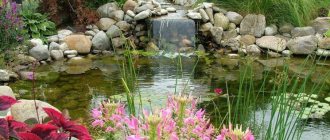“Smart” beds for the most advanced gardeners will help make the life of a gardener easier, increase the productivity of crops and turn worries about the harvest into relaxation. Lazy bed technologies will prevent seedlings from going to waste and allow the harvest to meet your expectations.
Do you want your vegetable garden to become your pride? Read our article on how to do this.
Vegetable garden layout
With the right approach, a vegetable garden can become not just a place for growing vegetables, but also turn into a stylish landscape design object. Experts in this field have developed many recommendations in this regard.
How to design beautiful beds for the lazy, tall and smart beds - this is what a gardener needs to know.
- When planning a garden arrangement, pay attention to the fertility and illumination of the area for the beds.
- Prioritize the quality of the beds, not their quantity. A few neat garden beds will look much better than a large garden overgrown with weeds.
- To save space, use multi-level designs.
- Framing the edges will help improve the harvest and give the beds an aesthetic appearance. Stone, paving stones, colored slate, and plastic fences are perfect for this purpose.
- The optimal width of paths between beds is considered to be 70 cm.
- To ensure that plants do not obscure each other, place them from north to south on a flat area, and on an area with a slope - perpendicular to it. At the same time, the southern slope is preferable for vegetable crops, and the northern one for garden crops.
- Don't limit yourself to rectangular shapes. The beds can be made in an arc or in the form of various geometric shapes, arranged in groups or create a single composition.
Summer residents grow many crops that have similar cultivation characteristics or, conversely, contradict each other.
See also: Layout of a plot of 12 acres. Scheme, options.
Green manure
A gardener has two global tasks: maintaining or improving soil fertility and fighting weeds. There is one method that will immediately solve both problems - the use of green manure. These are plants that grow quickly and form dense greenery that suppresses the development of weeds. They are sown after or before the main sowing/planting, then the greens are cut off, leaving the roots to rot in the ground. By rotting, they enrich the soil and also make it looser. And some of the green manures also kill diseases. So this agricultural technique is really very important.
This is not out of stupidity. This is an agricultural technology to improve soil fertility
Rules of application
Several basic techniques for using green manure. They are sown immediately after harvesting in a continuous carpet (lupine, rapeseed, phacelia). Or in early spring before planting the main crops. Scatter the seeds over the surface, then cover them with a rake. Two to three weeks before planting the main plants, green manure is mowed. Greens can be used for mulching. You need to cut it before the seeds appear, otherwise you will get a new type of weed.
Growing seedlings using green manure
When planting seedlings, green manure does not need to be mowed. We just make the hole larger, plant the seedlings, and mulch the soil. If green manure covers the sun, they can be trimmed, but in general, they even out temperature fluctuations. When the seedlings have taken root, you can cut off the green manure and mulch the soil with leaves.
What types of green manure plants are there and their choice
Many plants are suitable for improving soil health. When choosing green manure, take into account what you will plant after it.
- They enrich with nitrogen almost like adding manure: alfalfa, clover, sweet clover, china, lentils, peas, beans, etc. They also kill the nematode.
- General improvement of the condition of the upper layers of the soil and the fight against nematodes: winter rye and wheat, spring oats and barley, Sudan grass, millet, fescue. Dense greens do not rot very well, but make excellent mulch. Suitable for all types of soils, including acidified ones.
Green manure plants have different properties, but they all improve soil condition
- Soil enrichment (not suitable for acidified soils): rapeseed, mustard, rapeseed, radish. The greens are soft and rot well, but they need to be mowed before the “arrows” are pasted. After green manure from this group, you cannot plant cruciferous vegetables - cabbage, radishes, radishes, spinach, arugula.
- Phacelia, mallow, amaranth, flax, calendula, tagetes (marigolds) are also good for increasing soil fertility. It is necessary to mow before the buds appear.
To suppress weeds, green manure can be sown not only in spring or autumn—row spacing can also be sown in summer. Just remember to mow on time. The greens will be used as mulch. For regions with hot climates, green manure can be planted after the main plants have taken root. In this case, dense greenery will keep the soil from overheating.
If you plant oats/barley and legumes, or flax and calendula between the potato rows, there will be fewer Colorado potato beetles and nematodes. And phacelia and mustard will help get rid of wireworms. Plant sweet clover and lupine between the tomato bushes - they will prevent horse rot and late blight from developing.
Materials for beds
By zoning a site using beds, you can separate incompatible plant species or combine those that have the same care system.
| Material | Advantages | Flaws |
| Tree | Easy to create, mobile, easy to disassemble and transport | Prone to rot |
| Straw | Originality | Fragility |
| Stone | Durability, effectiveness | High price |
| Plastic | Easy to install and maintain, resistant to sun, cold, and moisture | Doesn’t always fit into the overall style of the site |
| Metal | Durability | Requires additional precautions |
See also: Do-it-yourself landscape design of a summer cottage, photo.
Principles of constructing lazy beds
The basic principle of the new approach to garden care is that you can dig and weed the soil only during preparation and planting, otherwise it will dry out quickly and will not be able to provide the crops with moisture. Only surface loosening is allowed.
A lazy bed is a completely new approach to gardening, which will allow seedlings to grow on their own and produce several times more yield.
You need to start preparing the beds in advance. Collect straw, sawdust or pine cones and cover the surface with them to make it difficult for weeds to grow in this area. This procedure is called soil mulching. It is thanks to her that the beds will no longer have to be weeded.
The rule says that you cannot dig or weed the soil, except for its preparation and planting itself.
Progressive summer residents have long appreciated the beauty of an automatic irrigation system, which allows them to save their time without damaging the crop. With the press of a button, you can start the watering process, and your beds will remain lush and green without much effort on your part.
Even though constant weeding can remove weeds and fluff up the soil, sooner or later it will dry out and will not be able to provide sufficient moisture for crops.
See also: Beautiful garden plot with your own hands.
Principles of crop rotation
To have a harvest every year, change the areas for planting plants of the same type. For example, don't plant tomatoes in the same place every year. Pests and diseases of a specific type accumulate in the soil. By changing plants and sowing disinfectant plants, you destroy pests.
Tomatoes, eggplants, potatoes are all nightshades and have the same pests.
So when selecting plants, it is also worth looking at the classification of species. To make it easier to navigate, we present a table of sequence/combination of crops.
| Culture for planting | Good predecessors | Valid predecessors | Bad Predecessors |
| Medium and late varieties of cabbage | Peas, beans, beans, cucumber, carrots, early potatoes | Beetroot, cabbage | |
| Early varieties of cabbage, cauliflower | Onions, cucumbers, beans, peas, beans, sederats. | Carrots, tomatoes. | Root vegetables, cabbage |
| Beet | Potatoes, cucumbers, greens, green manure. | Tomatoes, onions, carrots, cauliflower and early cabbage, | Beetroot, late and mid-season cabbage |
| Cucumbers, zucchini, squash, zucchini | All legumes, onions, garlic, cabbage, except late cabbage. | Potatoes, beets, greens | Tomatoes, carrots, late cabbage. |
| Tomatoes | Cucumbers, turnips, cauliflower, greens, green manure. | Onions, beets, cabbage of medium and late varieties. | Tomatoes, potatoes |
| Onion garlic | Legumes, potatoes, cucumbers, cauliflower and early cabbage | Beets, tomatoes, late cabbage | Greens, carrots |
| Potato | Legumes, green manure, cucumbers, cauliflower and early cabbage | Beets, carrots, mid and late cabbage, greens | Tomatoes, potatoes |
| Greenery | Legumes, onions, cauliflower and early cabbage, cucumbers, green manure | Potatoes, beets, greens, tomatoes | Carrots, late cabbage |
| Legumes | Potatoes, onions, garlic, whole cabbage, cucumbers | Root vegetables, green manure, greens, tomatoes | Legumes |
How to “change” vegetables in the garden beds
If you change places for planting plants according to the table above, it is most convenient to divide the garden into 4 parts. For the first time, plant plants that have the same requirements for soil and fertilizers in a certain area. For example:
- Responsive to the addition of organic matter: pumpkin, cucumbers, squash, cabbage.
- Less demanding soil qualities: tomatoes, peppers, eggplants.
- Root vegetables (carrots, beets, turnips, turnips, rutabaga).
- Potato.
Next year we are moving everything forward. In the fall, we add humus to the area where the potatoes were. We plant plants of the first group there. Plants from the second group move to 1 plot, etc. Schematically, the first option for crop rotation for a vegetable garden is shown in the left figure below.
Correct crop rotation in the garden - what to plant next
Sometimes potatoes and tomatoes take up half the area. In this case, we divide the second half into three sections, where we place the plants of the remaining groups. Every year, potatoes/tomatoes move from one half to the other, and the vegetables in the second half also alternate with each other. This crop rotation is shown schematically in the right figure.
DIY lazy bed
Homemade fencing is an easy way to build a foundation for your garden bed.
- Determine the desired height of the sides.
- Connect the boards using a screwdriver and remove the clamps.
- Turn the bed over and set it in place. Make sure that the light here is sufficient for seedlings to germinate.
- Bury the corner beams 12-15 cm into the ground.
- Adjust the sides using a building level. This is necessary for the proper operation of the irrigation system.
- Install plastic tubes from the inside to prevent the walls from collapsing due to bad weather.
- Level the area and cover it with anti-mole netting.
- Fill in the soil.
- Secure the irrigation system.
- Plant the seedlings.
- Install an awning if necessary.
In this approach, preparation for future planting is very important - it is advisable to do this in the fall.
See alsoCreating a flower garden is one of the forms of creative self-expression
Functional flower garden
Since Natalya’s plot is small and she cannot refuse to plant vegetables, she decided to develop a functional flower garden in which vegetables and flowers grow together.
This technique is practiced by many gardeners on our portal. A good solution: a border for a flower bed made of dwarf varieties of tomatoes, hedges made of bush zucchini.
Climbing beans and tall Telegraph peas are grown along the fence, which bear fruit throughout the season.
For beginners taking their first steps in creating their own garden. Natalya recommends unpretentious and long-flowering plants for planting together with vegetables:
- Lavatera is a leader in beauty, duration of flowering and unpretentiousness.
- Marigolds come in different varieties and heights, from lemon yellow to bright orange.
Natali-BForumHouse participant
I planted them both as seedlings and directly with seeds in the ground. The second ones were hardened, they quickly began to grow and in July surpassed the seedlings. Now I won’t take up space on the windowsill for marigolds, but will sow them early directly in the ground or under arches.
- Nasturtium, low-growing and climbing (it is planted under fruit trees). The only thing is not to forget to soak the seeds for a day in hot water
- Eschsholzia. There are many shades, the classic orange looks the best.
- Decorative red linen. Blooms until frost.
- Amaranths. You can sow seeds in the ground and forget about them. But these exotic plants decorate the garden and make it unusual.
- Calendula. It is not only unpretentious and very pretty, but also helps fight pests, improves soil health and is included in many medicinal teas.
- Nemophila. An excellent plant for living borders.
- Zinnia. Can be sown in the ground or grown in seedlings.
- Arabis sunbeam. At the end of the season, this plant is trimmed, leaving 3-4 centimeters, and sprinkled with earth. Next season, wild blooms are guaranteed!
Raised beds
Bad climate and low yields will become a forgotten problem for you thanks to the high construction of the beds. Their creation is quite labor-intensive, but the result will pleasantly surprise you.
Even though this is a very labor-intensive process at first - building the frame itself and watering the beds, it will allow you to forget about the bad climate and low yields.
The advantages of such beds.
- Good soil heating due to the proximity of the sun. They can be planted as early as April.
- The bottom mesh will protect the crop from moles and rodents.
- The frame, about 1.5 m wide, will ensure convenient watering, since it can be approached from both sides.
- By dividing it into two parts, you can easily organize a greenhouse with your own hands.
- The harvest on high beds appears earlier than on ordinary ones.
A high bed is always exposed to the sun, which helps to warm up the soil layer, so it can be planted as early as April without fear of freezing.
However, one drawback of this design can be identified - the need for frequent watering due to the fact that moisture quickly goes down.
The most popular materials for making raised beds are:
- Aluminum barrels;
- Stone;
- Brick;
- Logs.
It is worth noting that it is the high beds that provide the earliest harvest of first salads and then fastidious vegetables.
They are made in the form of combs or trapezoids. They are created for one season, since under the snow in winter they noticeably settle. They are used mainly for melons and melons – cucumbers, pumpkins, zucchini. Sometimes potatoes are planted in them.
See alsoPlants for landscape design
Watering
When creating a decorative vegetable garden, it is necessary to properly consider watering methods, which is very important especially in dry seasons.
The most popular method is watering from a hose with a sprayer. You can use various containers (for example, plastic bottles) that are dug into the soil; from small holes, water will seep directly to the roots.
Another method is drip. A pipe with small holes is laid in the box as the box itself is laid, then connected to the main hose or pipe. Drip irrigation greatly saves time, effort and water consumption. Nowadays, special stores sell ready-made kits for drip irrigation.
Smart beds
The main principle in smart beds remains the same as in lazy ones, but the emphasis is on fertilizers. The quantity of the harvest and how carefully it will be necessary to care for it directly depend on their quality.
Smart beds only need to be dug up once. They do not need weeding - mulch will prevent weeds from sprouting.
The soil in them is compost, consisting of straw, leaves and sawdust containing nutrients. A thin layer of soil is laid on top of it, and after a couple of weeks the bed can be planted.
See alsoDesigning a garden plot: the secrets of arranging with affordable means
Warm beds
The principle of constructing warm beds is based on multi-layering and the placement of fresh manure in their lower layers. In winter, the main processes begin, and by spring it begins to decompose. As the manure rots, it releases heat, and the bed becomes ready for planting early.
Many gardeners have been convinced more than once that high-quality fertilizer produces a large harvest that does not require much effort from its owner.
This method is suitable for radishes, cucumbers and other crops with shallow roots.
See alsoDesign ideas for decorating a terrace
Possible mistakes
In fact, even a teenager can build a bed from boards. There is nothing complicated about a wooden structure. Of the common mistakes, one can only highlight laziness in treating wood with protective impregnations. They will not completely save the box from rotting, but will extend its service life.
For a warm bed, it is important to follow a layer-by-layer filling of organic matter.
Errors occur when arranging a warm bed. Here it is important to properly lay the organic matter in layers and start the process of overheating. First, you need to study the entire technology of growing crops on such ridges, otherwise they may burn from the heat.
Wood processing and care
The process is aimed at maximizing the life of the wooden structure. The fence needs to be protected from two important enemies: moisture and wood-boring insects.
Impregnations are used to protect wood
The tree is protected from insects by an antiseptic. The compositions are available for free sale. Impregnation "Senezh" has proven itself well. To protect against moisture, a wooden structure can simply be painted.
Other protective compositions include a solution of three parts sunflower oil and one part propolis. The tree is opened with melted beeswax, a solution of lime or copper sulfate.
Important! If over time the side of the bed becomes rotten, the area is replaced with new boards.
Do-it-yourself warm bed
Having previously sampled 40-50 cm of soil, we lay the layers in the following sequence.
Such a bed uses not ordinary soil as soil, but compost, to which straw, leaves and sawdust are added, which as a result provides even more useful substances for future plants.
- Large wood
- Small wood
- Earth
- Organic - waste
- Sprinkle EM-Bokashi, spill EM-A
- Earth again
- Organic - waste
- Sprinkle EM-Bokashi, spill EM-A
- Humus
- Mulch (5-8 cm)
The service life of such a bed is 6-8 years.
See alsoTips for creating landscape design for beginners
Unusual solutions
A vegetable garden does not have to be boring, because there is easily room for imagination and originality.
See alsoBeautiful landscape design of a country house: we create it ourselves
Hanging beds
You can create unusual beds that will give your garden an original look and save space on your site with your own hands. You can make them from bags or plastic pipes cut in half. Plant strawberries, herbs or small vegetables in them.
Your site will be filled with meaning and you can give it individuality.
Another advantage of this design is that you can plant seedlings in them in advance and take them outside when it gets warmer.
See alsoFacade design as an integral part of home design
Vertical beds
Another way to save space is vertical multi-tiered beds. Wooden boards, boxes and plastic pipes will be excellent materials for creating such structures with your own hands.
The arrangement and shape of the beds depends on your imagination and the convenience of getting around them.
See alsoRequirements for the interior of a bathhouse
Beds made from scrap materials
The most common things can be adapted into containers for planting vegetables:
- Baskets;
- Boxes;
- Watering cans;
- Old chest of drawers;
- Dishes;
- Car tires;
- Unnecessary boots and boots;
- Wooden barrels;
- Bath;
- Bike.
Framing beds is not only the key to a good harvest.
You can even build a flower bed from a pair of old jeans. And by decorating tires, you can create the most unexpected compositions in the form of animals, flowers and favorite cartoon characters.
Paths
The paths between the beds should not be overgrown with weeds and take a lot of time to weed; it is better to cover them. There are various options for equipping paths - turfing with lawn grass that is resistant to trampling, covering with tiles, gravel, and broken bricks.
To prevent weeds from growing through them, first you need to lay geotextiles or roofing felt that does not transmit light on the paths, and then crushed stone, gravel, stone chips, and other material on top of it.
There are various ready-made slabs for garden paths on sale - rubber, plastic, or special roll coverings. Another option is a covering made from plastic bottle caps, which can also serve as a massage mat.
DIY multi-tiered bed
Making a classic square three-level garden bed with your own hands is quite simple. Preliminarily outline its location and draw up a plan on paper, taking into account the characteristics of the planned vegetables, the number of tiers, the size and topography of the site.
Combining certain crops in one bed will create an amazing plant design.
- Level and mark the surface.
- Treat the boards with antiseptic impregnation.
- Install sides with a height of at least 15 cm, maintaining right angles. Remember that the next levels will be lower in height. Therefore, it is better to choose the height with a margin.
- Connect the boards into panels using bars with sides of 50 cm.
- Lay polyethylene or metal mesh on the ground, cover with drainage, then soil, and then compost.
- The second level is installed on top. It should occupy 2/3 of the lower tier. The layers are stacked similarly to the previous one.
- The third level is made even smaller: it occupies 1/3 of the first tier.
- At the final stage, paint the outer walls of the bed with wood paint.
The composition can consist not only of vegetables, but also of herbs and flowers. Some plant species are able to provide vegetable crops with protection from pests and diseases.
Pros and cons of wood
Some gardeners like fencing made from wooden sides, while others are against the use of this material. Everyone has their own opinion. It is associated with the positive and negative characteristics of the tree.
Boards are environmentally friendly material
The review should start with the pros:
- The main advantage is environmental friendliness. Wood is an environmentally friendly, natural material. The ridge is guaranteed not to be contaminated. Even if the tree begins to rot over time, it will be an additional organic fertilizer for the plants.
- Wood is considered a fairly durable material. The board will withstand high soil pressure and will not break when hit by a hoe or shovel.
- The simplicity of wood processing allows a person without experience to independently assemble a box for a garden bed from boards. If a wooden side is broken, it can be easily restored.
- Despite the fact that the wood rots in the ground, the ridges will last at least 5 years. If a wooden structure is treated with protective impregnations and painted, its service life will increase to 10 years.
When exposed to dampness, mold appears on the wood
. Cons:
- The main disadvantage is the wood’s instability to moisture, which is always abundant on the ridge. The wooden box becomes moldy, fungus spreads, and the structure begins to rot.
- Edged lumber is expensive, and it is most convenient to make a fence from even boards. A croaker will cost less, but the appearance of the box will be such that it is better to hide it somewhere in the far corner of the garden.
- Due to its high hygroscopicity, wood absorbs moisture and oxygen abundantly. This increases weight. Wood can crack, deform, and swell. With a change in structure comes weakening. Under soil pressure, a wooden box can fall apart.
- The flammability of wood is also considered a disadvantage. In the event of a fire, there will be no trace left of the fences.
Despite the presence of disadvantages, wood remains the best environmentally friendly material for arranging beds.
Tips for a summer resident
The space between the beds can be filled with pebbles or separated by small paths.
| Task | Solution |
| Pick up inventory | Don't skimp on tools. Cheap equipment will quickly become unusable, and you will need to buy a new one. Therefore, it is better to immediately choose quality things. |
| Organize storage |
|
| Effectively combine cultures with each other | Play with contrasts and shapes. Combine climbing plants with large squashes and watermelons, or use the same crops but in different colors. |
| Lay paths between the beds | Lay them out with pebbles, concrete tiles, lawn grass or wood cuts. |
| Treat wooden fences | The most economical way: use copper sulfate on the inside and lime on the outside. The most durable: decking board. |
| Create a spectacular vegetable garden design | Choose a consistent style. Perfect for the garden: Mediterranean, Japanese, country. Choose matching borders, bed patterns and garden figurines. |
Garden decor
Decorative elements are something without which it is impossible to imagine a stylish vegetable garden. A small mill, a figurine of a garden gnome or a figurine in the shape of an animal, like a accidentally forgotten watering can or cart wheel - all these little things will complement the design of your site, and it will sparkle with fresh colors.
The design of beds can be very diverse, it all depends on your imagination.
Nobody forbids combining vegetables with garden plants. Flower beds, arches, trellises and “huts” entwined with climbing flowers will fit perfectly here.
To diversify the appearance of plantings, you can add flowers to vegetable crops, for example, marigolds.
French charm
Would you like to have something similar to the design of the royal Versailles from the time of the Sun King? Then you’ll have to start arranging your site in the French style!
It should be remembered that you will have to determine the central part of the composition, from which triangular beds will extend, forming a hemisphere or semicircle. Symmetry must be observed when designing each element.
More detailed information on how to plan an exquisite vegetable garden can be easily found on the Internet. We will list those elements that will decorate a suburban area in general, and a vegetable garden in particular:
- decorative borders of paved paths;
- miniature fountain;
- curly (topiary) bush trimming;
- garden sculptures.
Important! Low-growing shrubs are suitable for such a garden. They should not “obstruct” the view, and from time to time they “demand” a fashionable “hairstyle”.
Note!
- Do-it-yourself canopy over the porch - choice of materials, types of structures + instructions for making it yourself
Do-it-yourself bathhouse in the country: expert recommendations, choice of materials, step-by-step description + instructions for DIY construction
How to sew outdoor curtains for a gazebo with your own hands: step-by-step instructions + 140 photos of ready-made ideas
Single style
We bring to your attention the most popular solutions for vegetable garden design in a general style.
Choose plants that are contrasting in shape and color, don’t be afraid to experiment!
| Style | Colors | Materials | Peculiarities |
| Mediterranean | Pastel shades, terracotta, ocher | Natural stone, paving slabs, wood flooring, brick |
|
| Country | Variegated natural shades | Natural wood, stone, willow twig |
|
| Japanese | Green palette | Small crushed stone, pebbles, boulders |
|
| French | Delicate natural colors | Almost any: wood, stone, brick, slate, concrete |
|
A stylish vegetable garden with a unique design will become the pride of any summer resident, and smart technologies, high beds and the right choice of soil will help increase productivity and save effort and money spent on maintenance.


